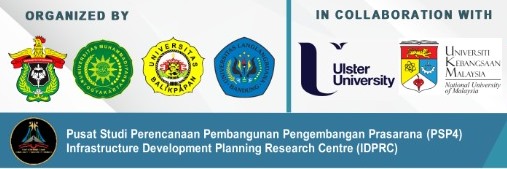Ultrasonic Pulse Velocity and Initial Rate of Water Absorption Of Foam Concrete Containing Blended Cement
DOI:
https://doi.org/10.36277/icasgi.v1i1.26Keywords:
blended cement, fly ash, NDTs, UPV, IRA.Abstract
— This The adverse environmental effects caused by cement production activities are minimized by reducing the use of cement in the concrete mix, replacement with eco-friendly materials, and making low-material cement derived products. During the cement production activities, fly ash can also be used by mixing it in form of Portland Composite Cement (PCC)/blended cement products or directly in the concrete mixing process. Furthermore, in low-material cement derivative products, foam concrete is usually obtained using an agent that forms random air bubbles in the cement paste and is applied in construction according to its structural function. Therefore, this study aims to analyze the correlation between density and non-destructive tests (UPV and IRA) on foam concrete with variations in the use of cement, namely OPC, PCC-1, PCC-2, and OPC+FA. The quality of the foam concrete was evaluated by testing the compressive strength, which is fast, practical, and non-destructive. The methods that are commonly used include the Hammer test, Ultrasonic Pulse Velocity (UPV), and Initial Rate of Water Absorption (IRA). The results showed that the correlation between UPV and IRA is inversely proportional because an increase in the UPV value in the specimen reduced the IRA value.
Downloads
Published
How to Cite
Issue
Section
License
Copyright (c) 2022 PROCEEDING OF INTERNATIONAL CONFERENCE ON APPLIED SMART AND GREEN INNOVATION

This work is licensed under a Creative Commons Attribution 4.0 International License.

















